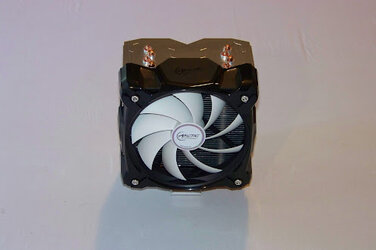- Joined
- Jan 9, 2005
- Location
- Livonia, MI
Sorry I forgot to mention that I'm using a Cooler Master Hyper 212 Evo.
Welcome to Overclockers Forums! Join us to reply in threads, receive reduced ads, and to customize your site experience!
Definitely not the case in my experience. I had a couple different faulty RAM chips back in the AMD socket 939 days that wouldn't throw an error in Memtest, but would fail Prime95 only after 2+ hours. These same chips would cause Windows to BSOD while idling.I was always under the impression that Memtest was a solid indicator of memory stability. Apparently there is more to it?

IDK, but I'd rather have something from Cooler Master Hyper series than that Arctic heatsink.
Dam those stuff is hot. Its first time i see such temps at this forum.
Lot of worry regarding my IB at my SFF. I did wait so long to get my second PC, and now it seems to turn out to be a water cooker. Intel need to improve design, use solder and what else. I dont see that stuff running fine in smaller systems, its hard stuff. Huge systems should be miles away from heat issues but coming close to 100 C at 4.4 Ghz (medium OC), is a heat issue.
But seriously, not even a 6 core Nehalem clocked at 4 Ghz, inside a SFF does heat up that much, i tested that stuff already using Intel Burn Test 1h in a row! So all i can think of, some problem with heat dissipation at the die.
However, some people say: Not a problem if you don't overclock. It really only starts to heat up when you try to reach 4.5Ghz and pushing more then the stock voltage through. Otherwise it run just as cool.
All i want to attain is 4 Ghz, so i could be safe.
Still wonder how to tackle 10 nm, it will be like a smolten nuclear reactor.
Dam those stuff is hot. Its first time i see such temps at this forum.
Lot of worry regarding my IB at my SFF. I did wait so long to get my second PC, and now it seems to turn out to be a water cooker. Intel need to improve design, use solder and what else. I dont see that stuff running fine in smaller systems, its hard stuff. Huge systems should be miles away from heat issues but coming close to 100 C at 4.4 Ghz (medium OC), is a heat issue.
But seriously, not even a 6 core Nehalem clocked at 4 Ghz, inside a SFF does heat up that much, i tested that stuff already using Intel Burn Test 1h in a row! So all i can think of, some problem with heat dissipation at the die.
However, some people say: Not a problem if you don't overclock. It really only starts to heat up when you try to reach 4.5Ghz and pushing more then the stock voltage through. Otherwise it run just as cool.
All i want to attain is 4 Ghz, so i could be safe.
Besides: Any good comparison vs. SB at same clock? I wonder the difference.
Still wonder how to tackle 10 nm, it will be like a smolten nuclear reactor.
temperature of the die of the CPU != the heat output into the system. It technically puts out less heat than a sandy bridge processor, despite running hotter internally.

Too many people are confusing temperature with heat in all these Ivy threads...